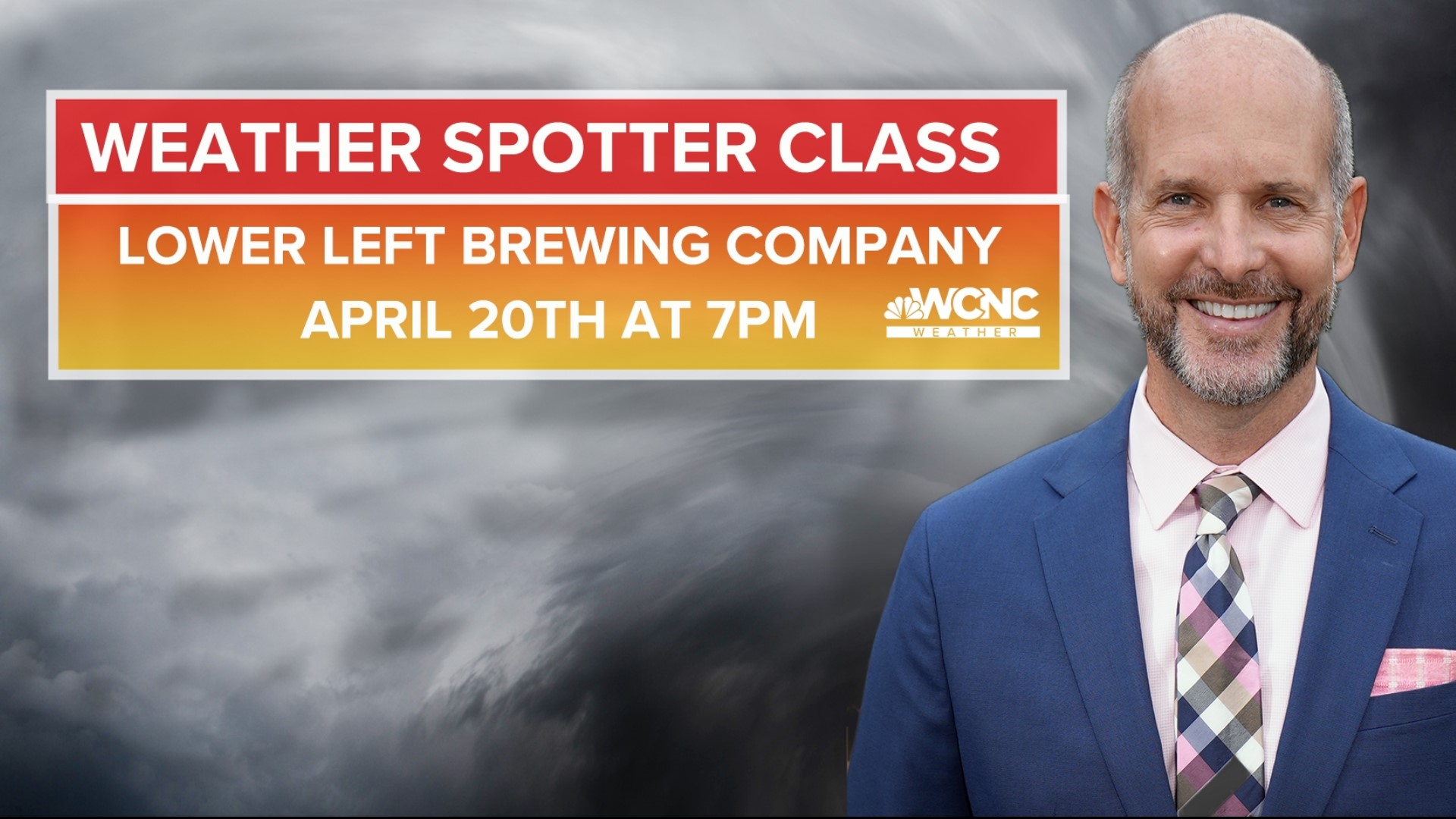CHARLOTTE, N.C. — WCNC Charlotte Chief Meteorologist Brad Panovich hosted a class Thursday night to help people learn how to spot and observe severe weather by becoming a SKYWARN severe weather spotter.
The class was free and open to everyone regardless of age and experience. There was an option to join the class in person, but since space is limited, there was also a virtual streaming option.
Where and when
Brad Panovich's weather spotter class was held Thursday, Apr. 20 at 7 p.m. at Lower Left Brewery Co., which is located at 4528 Nations Crossing Road in Charlotte. The location is near the Interstate 77 exit for Woodland Road and Billy Graham Parkway.
The class was expected to last about 90 minutes.
Attending in-person
Attendance at Lower Left Brewery Co. was open to everyone. The brewery opens at 4 p.m. and closes to the public at 9 p.m. Seating was available on a first-come, first-serve basis.
WCNC Charlotte viewers had been invited to request reserved seating, and general seating was available Thursday on a first-come, first-serve basis.
How to watch the class online
The class streamed here -- in addition to the WCNC Charlotte Weather IQ YouTube page and the WCNC+ app, which is available as a free download for your phone, Roku, or Amazon Fire. The class is also available for on-demand video playback.
Topics covered
Panovich taught the basics of storm development and key signs to properly identify severe weather such as tornadoes.
Participants learned:
- Basics of thunderstorm development
- Fundamentals of storm structure
- Identifying potential severe weather features
- Information to report
- How to report information
- Basic severe weather safety
What happens after completing the class
Those who completed the class are invited to join the WCNC Charlotte Storm Spotter Facebook group.
Storm spotters are not storm chasers. They do not need special equipment or vehicles. Instead, storm spotters are trained to recognize severe weather happening outside their windows in their own community. This critical information gets relayed to meteorologists, who use hyperlocal storm reports in their efforts to issue timely warnings and storm damage reports.
Those who successfully completed the class will also receive certification as a National Weather Service SKYWARN storm spotter, a nationwide program consisting of more than 350,000 volunteers nationwide.
The program was created in 1970 and has evolved over the years to accept storm reports across technological advancements, including amateur radio, telephone, and social media.
While anyone can submit storm reports to the National Weather Service, reports from certified SKYWARN storm spotters are highly regarded since NWS meteorologists know those have come from trained observers.


